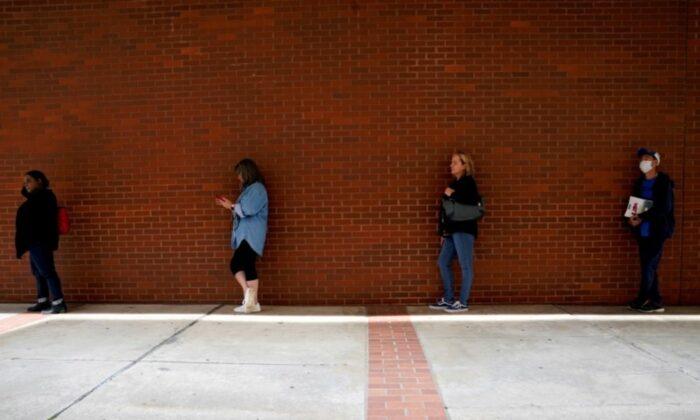WASHINGTON—The number of Americans filing new claims for unemployment benefits increased last week for the first time in more than a month, but layoffs are easing amid a reopening economy and a shortage of people willing to work.
Initial claims for state unemployment benefits totaled a seasonally adjusted 412,000 for the week ended June 12, compared to 375,000 in the prior week, the Labor Department said on Thursday. That was the first increase since late April.
Economists polled by Reuters had forecast 359,000 applications for the latest week.
The economy is ironically facing a labor crunch, despite employment being still 7.6 million jobs below its peak in February 2020. A shortage of childcare facilities is keeping some parents, mostly women, at home.
Generous government-funded unemployment benefits, including a $300 weekly check, have also been blamed, as well as a reluctance to return to work out of fear of contracting COVID-19 even though vaccines are widely accessible. Pandemic-related retirements and transitions into new careers are also factors.
The Federal Reserve on Wednesday held its benchmark short-term interest rate near zero and said it would continue to buy $120 billion in bonds each month to fuel the economic recovery. The U.S. central bank brought forward its projections for the first post-pandemic interest rate hikes into 2023 from 2024.
Fed Chair Jerome Powell told reporters he was “confident that we are on a path to a very strong labor market, a labor market that shows low unemployment, high participation, rising wages for people across the spectrum.”

A handful of states, including Iowa and Alaska, either terminated all federal government-funded benefits or just the $300 supplement last Saturday. Their fellow Republican governors in 21 other states, including Texas and Florida, will end these benefits for residents between June 19 and July 10. For the rest of the country, the expanded benefits will lapse on Sept. 6.
“It will be particularly important to see if the end of benefits results in an increase in employment or labor force participation in these states over the summer months,” said Veronica Clark, an economist at Citigroup in New York.
“It will be important to see if the end of benefits in these states results in rising employment, as this would be a sign of possible labor market trends into the fall when benefits expire nationally.”
There are a record 9.3 million job openings, while 9.3 million people are officially unemployed.
Though layoffs are easing, initial claims remain well above the 200,000 to 250,000 range that is viewed as consistent with healthy labor market conditions. Claims have, however, dropped from a record 6.149 million in early April 2020.
Last week’s claims data included the period during which the government surveyed business establishments for the nonfarm payrolls component of June’s employment report. The economy created 559,000 jobs in May after adding 278,000 in April.
To get a better picture of how hiring fared in June, economists will await data next week on the number of people continuing to receive benefits after an initial week of aid. The so-called continuing claims are reported with a one-week lag.





